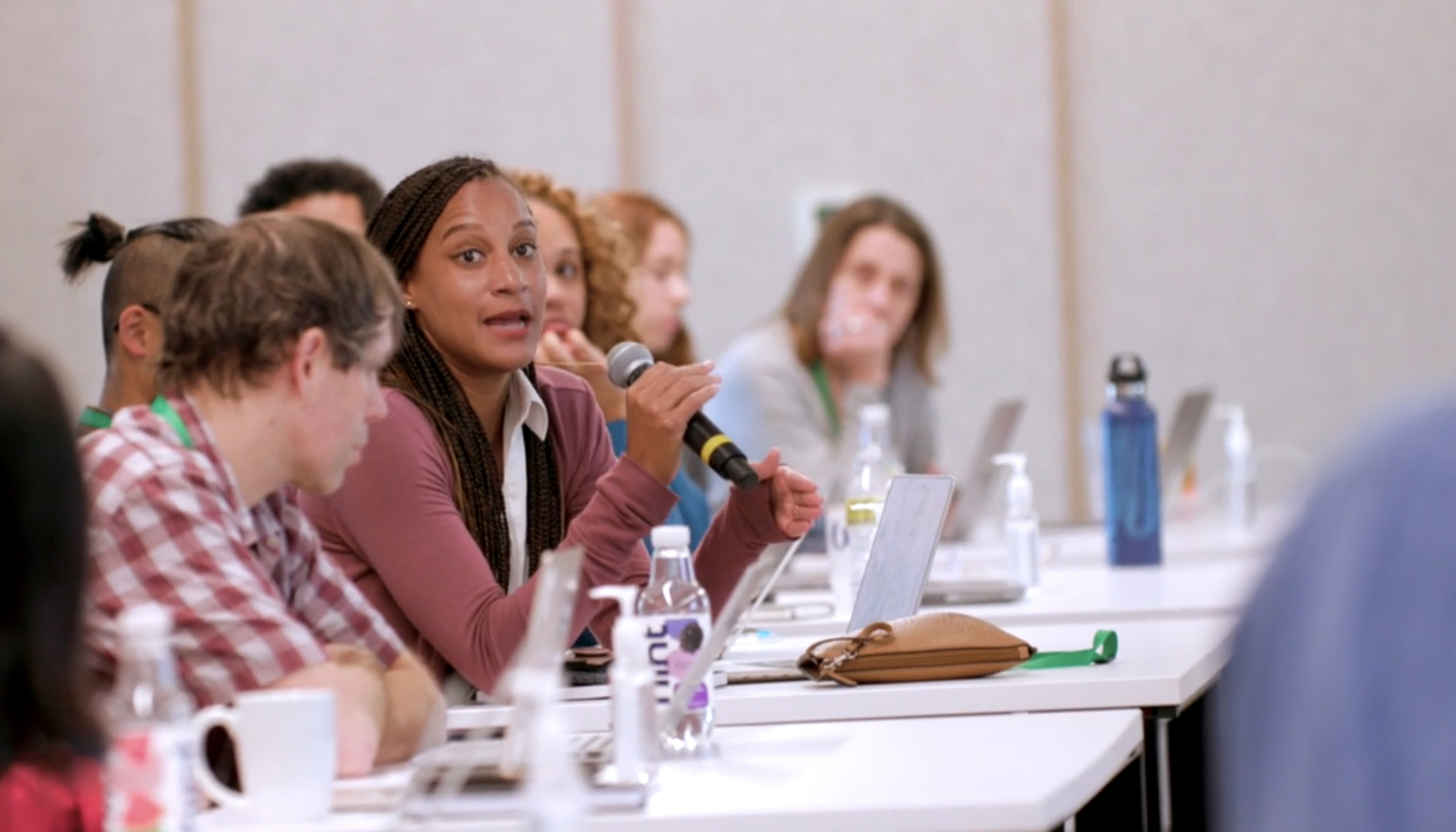Dec 5, 2023 · 12 min read
2023 Reflections: 7 Memorable Moments and Learnings From Across Our Work
Look back on the last year, which brought the potential for new AI advancements in science, transformative progress in education, and a new program for economic inclusion in California.
As the year comes to a close, we’re reflecting on the transformative journey of the last eight years and how it has brought us to where we are today. Join us as we explore seven of 2023’s memorable moments and reflections — from bringing the power of AI to biology and the opening of new scientific institutes dedicated to curing and preventing disease to expanding on our education technology tools and launching a program to support entrepreneurs in California’s Bay Area.
1. Accelerating Science Through Artificial Intelligence

We’ve made foundational strides towards leveraging artificial intelligence in our science work by funding research about our cells, building tools for researchers to explore that data, and creating scientific institutes to take on big challenges in understanding cell biology. These early bets are now making it possible to take our next step in using AI to unlock new scientific understanding that will help scientists end diseases.
The Essential Open Source Software for Science program has helped fund computing projects such as NumPy, scikit-learn, scikit-image, Dask, and SciPy — pillars on which modern computational and AI methods for science are built. Early career investigators in CZI’s Neurodegeneration Challenge Network, like Dr. Michael Keiser (University of San Francisco) and Dr. Debora Mark (Harvard University), are doing impactful work with AI to decipher aspects of human biology that contribute to health and disease. Our single-cell biology program develops tools and resources, like CZ CELLxGENE, that process large volumes of data using machine learning methods to help unlock new insights about the fundamental characteristics of our cells. We made these strategic investments because we knew someday AI could help us achieve our ambitious goal: to help scientists cure, prevent or manage all diseases by the end of this century.
This work in science paved the way for us to take advantage of recent AI advancements. In September, we announced that CZ Science will build an AI-powered system that will enable predictive models of cells. These models will enable scientists to predict all cell types and cell states from the genome — the complete set of genetic information in an organism — and understand the effects of disease-causing mutations. It will be one of the world’s largest computing systems for nonprofit life science research.
2. Standing Up New Scientific Institutes
We‘re developing new types of research institutes to do science that cannot be done in conventional environments. Based on the success of the Chan Zuckerberg Biohub in San Francisco, California, we expanded to form the Chan Zuckerberg Biohub Network, a group of nonprofit biomedical research institutes that bring together scientists, engineers and physicians to pursue grand scientific challenges on 10- to 15-year time horizons. The network focuses on understanding the underlying mechanisms of disease and developing new technologies that will lead to actionable diagnostics and effective therapies.
In 2023, we launched two new CZ Biohubs — the first in Chicago, Illinois, and the second in New York City. CZ Biohub Chicago, led by Dr. Shana Kelley, professor of chemistry and biomedical engineering at Northwestern University, is working toward understanding and treating the inflammatory states that underlie many diseases. Inflammation-related diseases — such as ischemic heart disease, stroke, cancer, chronic kidney disease, and autoimmune and neurodegenerative conditions — cause approximately 50% of all deaths. CZ Biohub Chicago will engineer technologies to make precise, molecular-level measurements of biological processes within human tissues. The effort unites the University of Chicago, Northwestern University and the University of Illinois Urbana-Champaign.
Chan Zuckerberg Biohub New York, the newest Biohub, brings together Columbia University, The Rockefeller University and Yale University to engineer immune cells for early disease prevention, detection and treatment. Dr. Andrea Califano, professor of chemical and systems biology at Columbia University, is the new institute’s president. CZ Biohub NY will initially apply novel, technology-driven approaches to hard-to-detect cancers such as ovarian and pancreatic cancers; neurodegenerative diseases, including Parkinson’s and Alzheimer’s; and aging and autoimmunity.
3. Bringing Together Rare Disease Patients and Advocates in Their Quest for Cures
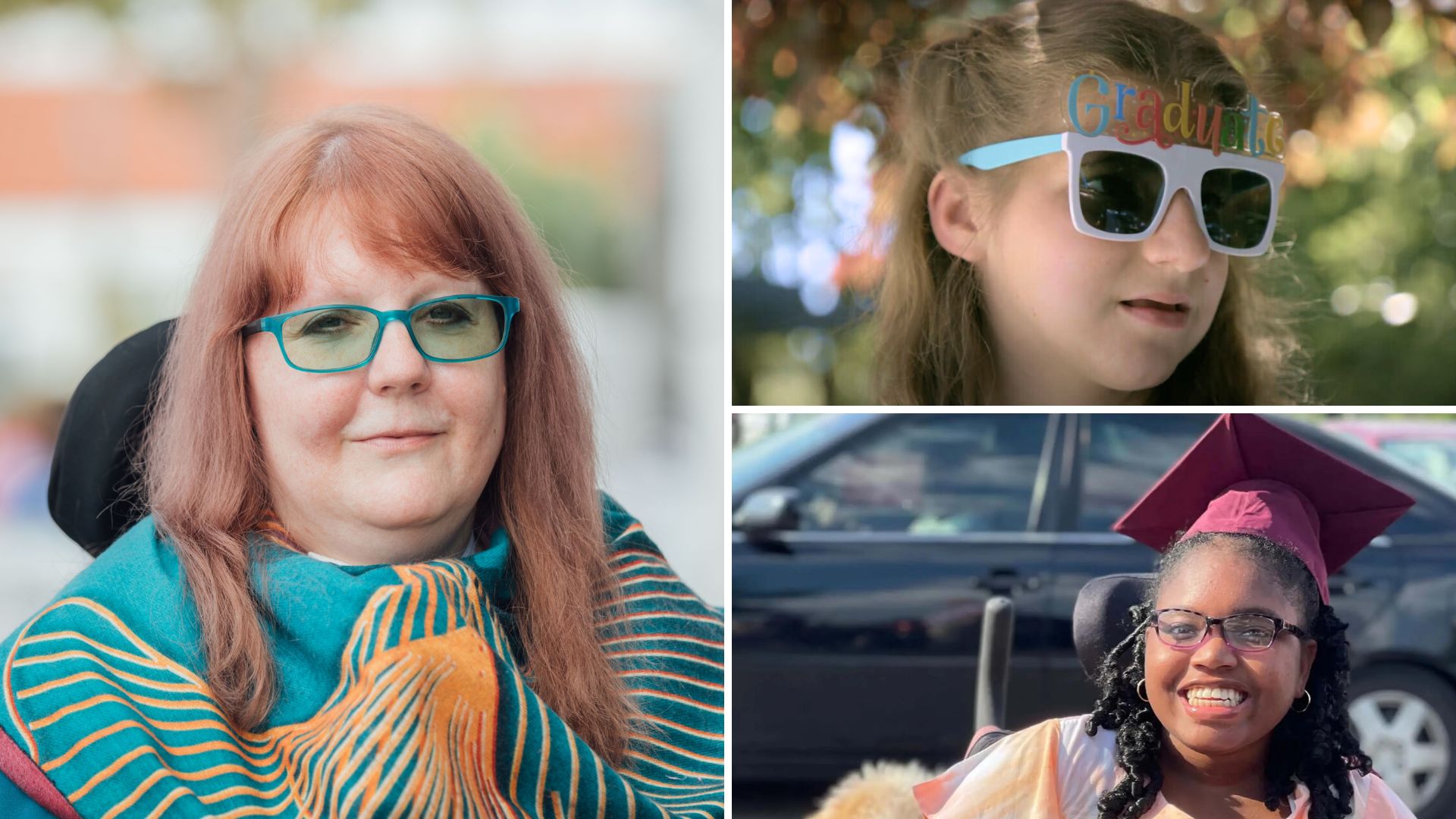
Kim Nye spent a decade traveling the world seeking a diagnosis for her daughter, Tessa Nye, who was having more than 100 seizures daily. Khari McCrary had her first seizure when she was 12 but wasn’t given a correct diagnosis until two years later. When Rachel Alvarez was a baby, she was diagnosed with an unspecified muscular disease. Doctors told her mother to take her home and love her.
Tessa Nye, McCrary and Alvarez live with one of the more than 10,000 rare diseases affecting over 400 million people globally — making rare diseases anything but rare. However, most are poorly understood, and less than 5% have approved treatments.
Patients are taking matters into their own hands and challenging the patient-researcher divide. They’re bringing together researchers and patients, aligning shared priorities, and seeing faster discoveries and the development of new treatments. CZI’s Rare As One Network supports the efforts of these rare disease advocacy organizations with funding, capacity-building and tools.
With no organizations supporting research on her daughter’s disease, Kim Nye founded the TESS Research Foundation — a nonprofit organization working to expedite diagnoses, identify new treatments, standardize management, and ultimately, cure SLC13A5 Epilepsy. A member of the Rare As One Network, the foundation has since created a registry including 130 patients from more than 25 countries, surveyed its community to understand patient priorities, held a clinical research conference, designed a preclinical toolkit to accelerate research, and partnered with biotech and academia to develop a gene therapy.
McCrary and her family are now connected with Chelsea’s Hope — a nonprofit improving the lives of those affected by Lafora Disease, with which McCrary was ultimately diagnosed. Chelsea’s Hope works to accelerate the development of treatments by bringing together clinicians, researchers, industry professionals and patients worldwide. Chelsea’s Hope has focused on research that has identified multiple biomarkers that may be used to establish endpoints for clinical trials. The organization is a member of our Rare As One and Neurodegeneration Challenge Networks.
When Alvarez was almost 40, experiencing respiratory failure and a collapsed lung, she finally received genetic testing and an explanation for her disease. She set out to ensure others with her condition would also receive a diagnosis. Now the executive director of Cure CMD, Alvarez’s organization works to advance research and find treatments for congenital muscular dystrophies (CMD) and improve the lives of those living with CMD. CureCMD partners with researchers, supports an international patient registry, and recently produced a film highlighting the patient community’s perspective.
Around the world, rare disease patients and their caregivers and advocates are working tirelessly to build community and advance research while ensuring the patient’s voice is at the center of their work. In November, we opened a new funding opportunity to expand the Rare As One Network to international organizations.
4. Developing Imaging Technology To Push the Boundaries of What We Can See and Measure
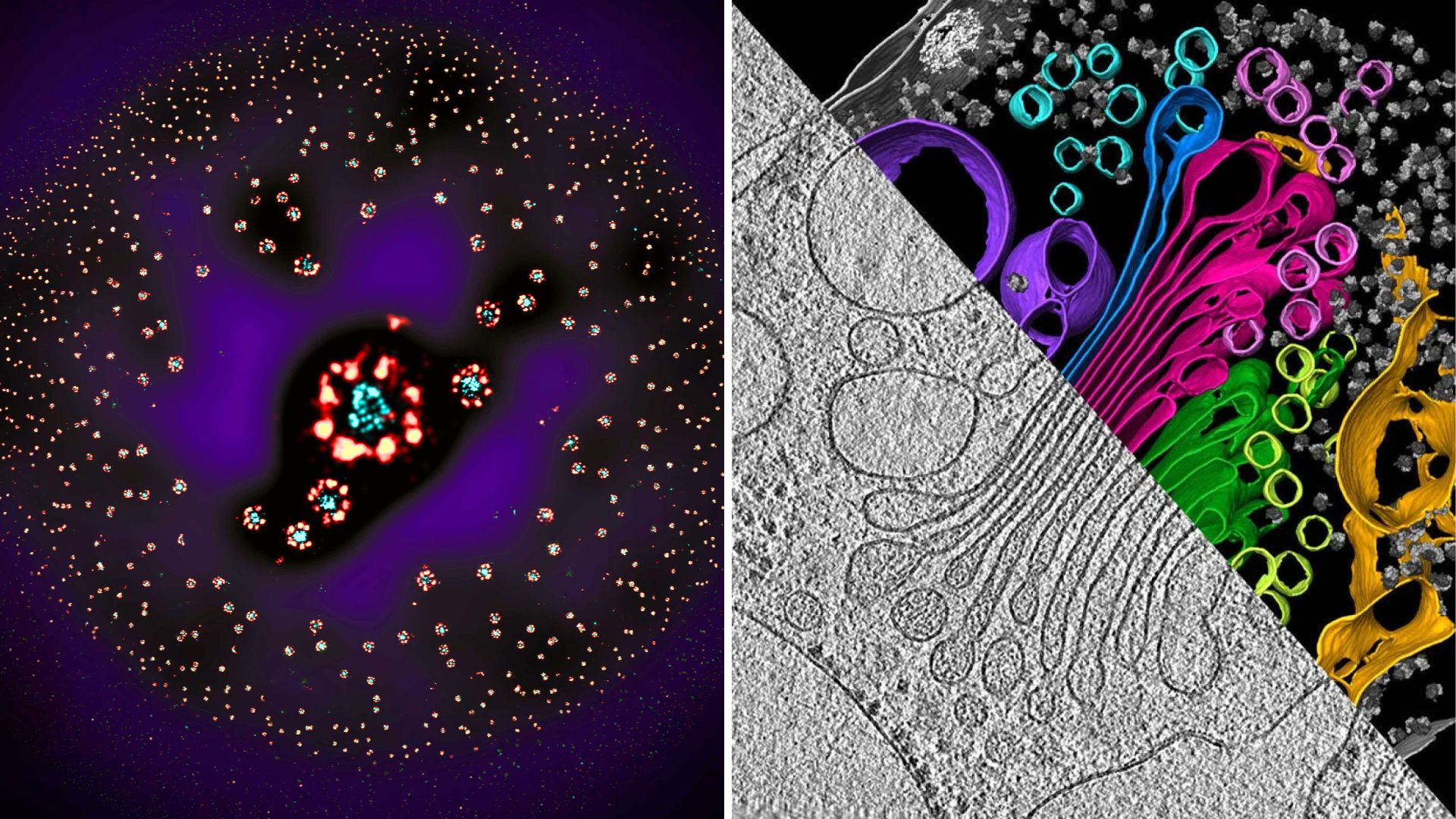
Progress becomes possible when we connect more scientists with the data and tech they need to do innovative work. And to cure, prevent or manage all diseases by the end of the century, we need to develop a dynamic, integrated view of biological systems in health and disease. The Chan Zuckerberg Institute for Advanced Biological Imaging builds revolutionary new imaging hardware and software tools.
Cryo-electron tomography (cryo-ET) is a groundbreaking imaging technique for viewing molecules in cells that has made significant strides over the past few years. Still, it takes painstaking, months-long work for researchers to manually identify biomolecules, like proteins, in their samples. Ultimately, this can slow the pace of discovery. The CZ Imaging Institute is addressing these bottlenecks.
This year, the CZ Imaging Institute, in partnership with CZI’s science technology team, started developing a cloud-based, open-source software portal aimed at driving automated annotations of cryo-ET datasets. The CryoET Data Portal enables machine learning experts to access and analyze data, helping researchers find insights faster. By creating an easy-to-use portal, more researchers can deposit data, develop new, quicker methods for processing data, and explore the biological significance of data.
5. Supporting Educators and Unlocking Student Potential
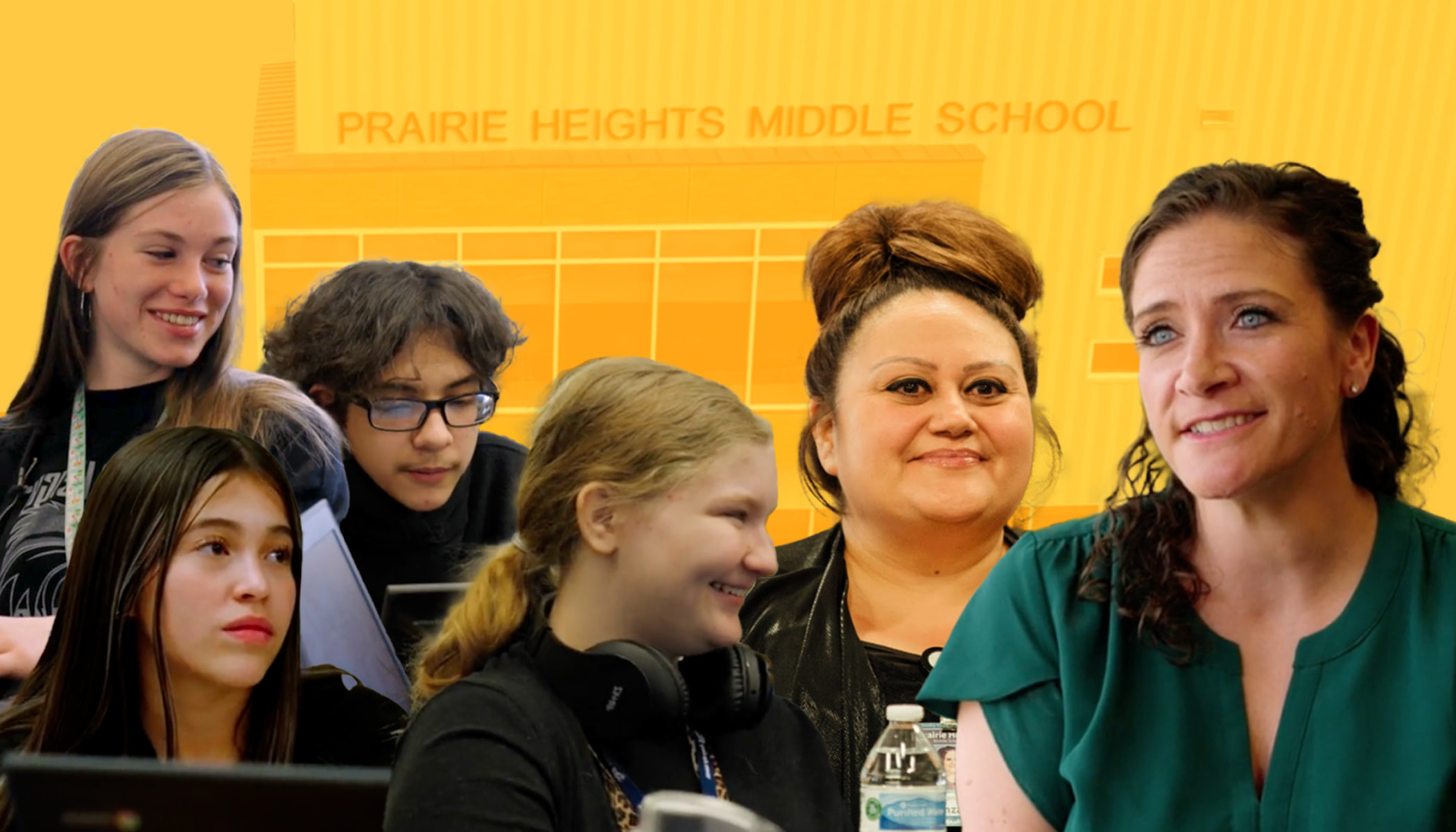
Our education work is made possible by partners dedicated to equipping educators, families and students with tools that integrate high-quality research, practices and content. These tools can unlock the full potential of every student, no matter who they are or where they live.
This year, we continued to make investments that support educators in getting a holistic, contextualized understanding of students’ academic success and development to inform their approach to teaching. We continued to support the development of tools that help teachers connect with students and tailor learning experiences to individual student needs.
Take, for example, Prairie Heights Middle School in Northern Colorado. The school implemented the Summit Learning program — a comprehensive program created by educators and supported by Gradient Learning and CZI that teaches core subjects while also developing the skills and habits of lifelong learners. After the first year of implementation, Prairie Heights’ rating from the Colorado Department of Education jumped from the second-lowest ranking in the performance framework to the highest. The school maintained its ranking for the last three years and, in 2023, has really built a culture of strong teacher-student relationships.
Prairie Heights is also committed to prioritizing teacher voices and their professional learning. With the support of the Summit Learning program, the school embraces the idea of continuous improvement by working on crucial areas that matter to their educators and boosting their development.
6. Building Technology To Make Research Accessible

We build tools to help teachers reach students where they are, enhance their learning, and foster stronger, positive relationships. As the classroom evolves, so do those tools.
In August, Along — a free teacher-student connection builder we created with Gradient Learning — introduced expanded features for the 2023-2024 school year that integrate student voice for inclusive and engaging classrooms. The updates to Along provide educators with a solution to strengthen connections with their students and create and maintain trust year-round by capturing and integrating student input. Updated features also include new content and question types and easier onboarding and integration.
In late October, Along unveiled its first e-book, “5 Steps to Transform Your School Into a Community.” Anyone can download the eBook to learn how to create responsive and inclusive classrooms that support students.
Along is an example of CZI’s active partnership with educators and experts to build tools that integrate high-quality research, practices, and content to help address chronic educator challenges and unlock the full potential of every student, no matter who they are or where they live. Through continued partnership with Gradient Learning, CZI is co-designing new tools grounded in and responsive to real educator and student needs.
Keep exploring: 8 Years of Education Technology Development and Grantmaking
7. Eliminating Barriers and Expanding Access for Aspiring Entrepreneurs
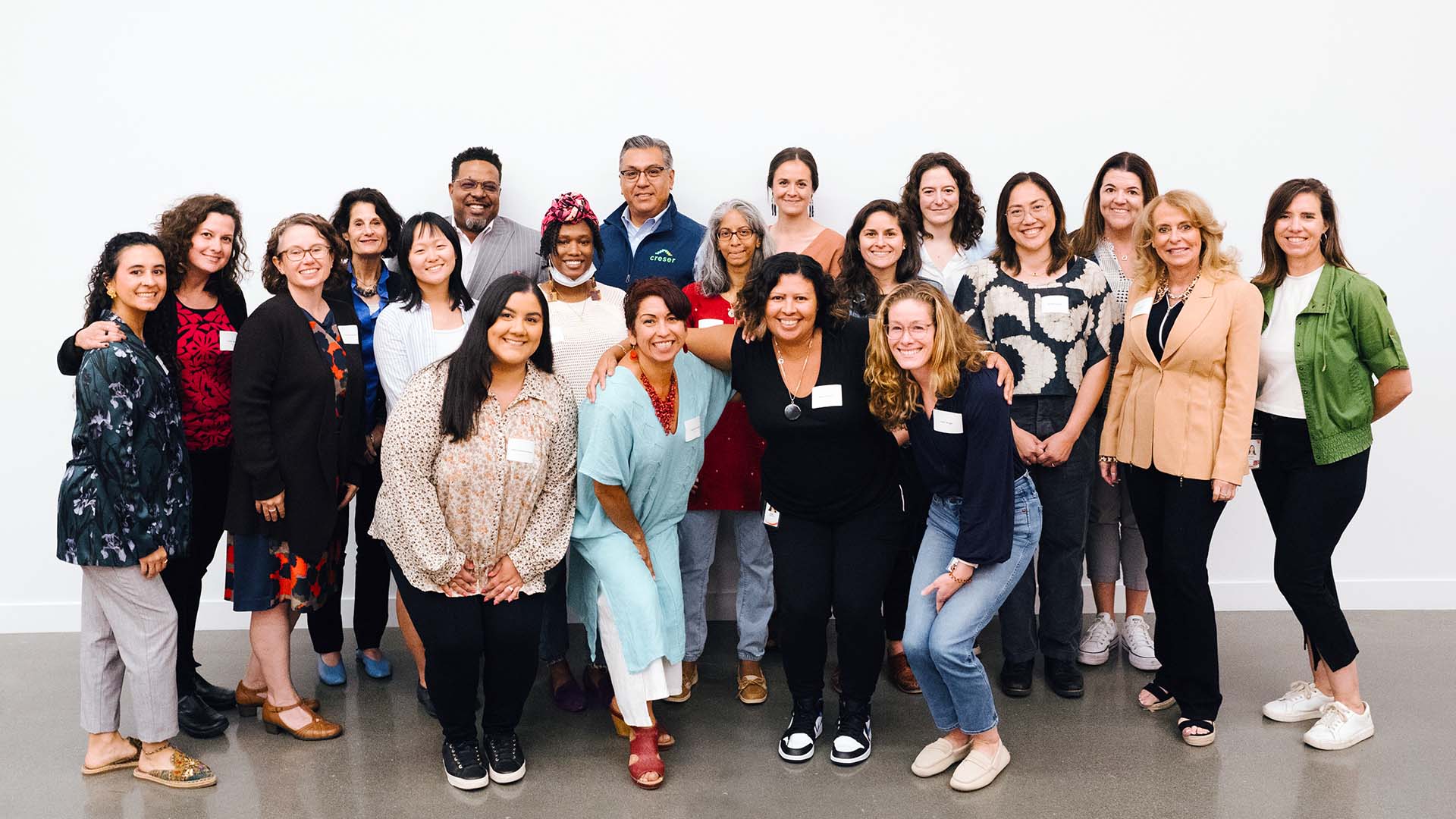
According to the Stanford Social Innovation Review, businesses with fewer than 20 employees comprise more than 85% of all businesses in the United States, employing over 30 million people. Black, Indigenous, and entrepreneurs of color are more likely to consider their neighborhoods as the site of their business transactions. But businesses owned by people of color are rare in California’s Bay Area despite its diversity. With the launch of our Inclusive Entrepreneurship program, we’re committed to helping eliminate the structural, racial and socio-economic barriers that often prevent aspiring entrepreneurs from owning and sustaining a business.
Last July, CZI announced its support for six Bay Area organizations that are uplifting local businesses and entrepreneurs to build economic inclusion. These partners are helping entrepreneurs access the capital and culturally competent technical assistance they need to become successful small business owners. One such organization is Prospera, which partners with Latina/x entrepreneurs to launch and grow businesses that foster cooperation, economic independence, and well-being in immigrant communities. Through culturally-based programs, entrepreneurs can access the networks, tools and capital they need to become successful business owners and influential community leaders.
Also read: How CZI Inclusive Entrepreneurship Program Lead Rosa Cabrera Is ‘Supporting People’s Hustle’
The Year Ahead
In 2023, we learned a great deal and, with the help of our science, education and community partners, made significant progress toward our mission. The possibilities for next year excite us, and we’ll continue to build, fund, and do meaningful work through key investments. Explore our annual letter to hear from our co-founders, Priscilla Chan and Mark Zuckerberg, as they reflect on the last eight years and all that’s to come.




